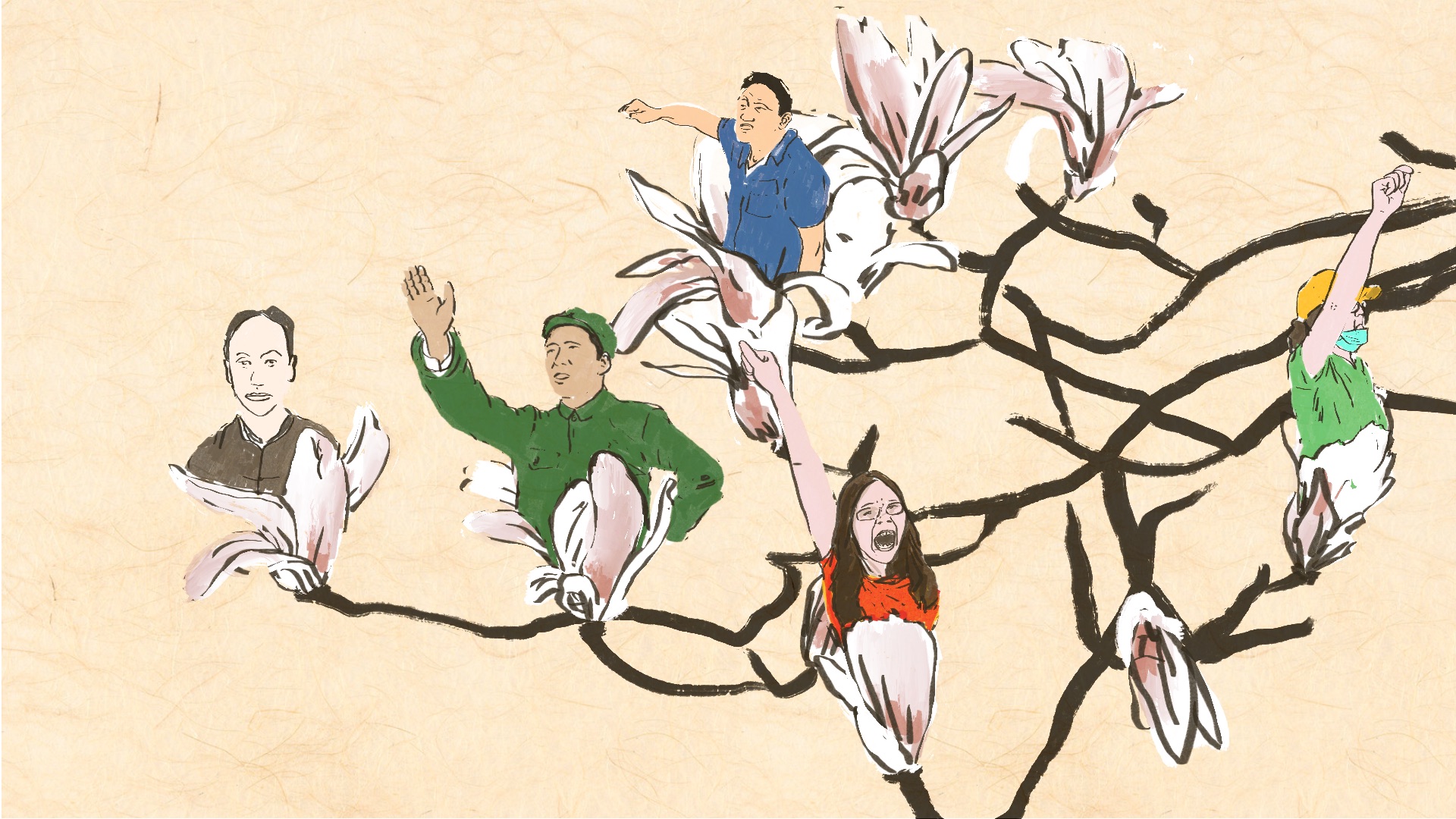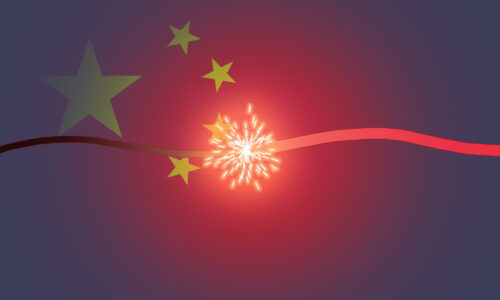China’s New Youth: The diverse post-Tiananmen generation shaping the country
The Chinese youth of today are largely divorced from history. But like generations of Chinese youth in the century before them, they are making their own.

For more than a century, China’s youth have shaped the country in radical and stunning ways, from overthrowing a dynasty to demanding liberalization and reform (and paying a price in blood). In China’s New Youth, the recently published U.S. paperback version of Alec Ash’s 2016 book Wish Lanterns, the author focuses on modern China’s “sixth generation” of youth, those born in the aftermath of the Tiananmen protests of 1989. The following is Ash’s new preface for China’s New Youth, republished here with permission.
In 1915, the intellectual Chén Dúxiù 陈独秀 penned a call to arms for the youth of China, as the opening essay of New Youth, a revolutionary magazine he founded. He wrote:
Youth are like the early spring, like the morning sun, like the blooming grass, like the sharp blade fresh off the whetstone; youth is the most valuable time of life.
Little did he know that China’s new youth would fundamentally transform the nation throughout the next century — or that they continue to do so today.
Back then the Republic of China was young too, a fledgling state plagued by warlords after the Qing dynasty was overthrown in the Xinhai Revolution of 1911. For China to progress, thought Chen, she must cast off the relics of Confucianism and feudalism, and create something entirely new. His essay praises young Chinese who oppose the sclerotic ancien regime as “fresh, vigorous cells inside the human body,” whereas the old guard are “rotten, corrupted cells.” In this metabolism of society, the new cells must “vigorously drive out” the old, and if they persist then “maybe society will arrive at a peaceful day.”
New Youth magazine kickstarted the New Culture Movement, which called for a rejection of traditional Chinese values in favor of progressive ones. Its proponents held up the twin idols of “Mr. Science” and “Mr. Democracy” — as opposed to “Mr. Confucius” — and said there was much China could learn from the West and modernity. The same spirit energized its sibling, the May Fourth Movement, named for student protests on May 4, 1919, when thousands of Peking University students marched to Tiananmen Square to protest government corruption and weakness. It was these young people who were at the vanguard of affecting change in China, with passion and vigor, and May 4 is still celebrated as Youth Day across the nation.
Inspired by these rebellions, Chen Duxiu turned to Marxism for ideas on how to involve the people in China’s rejuvenation. Then dean of Peking University, in 1921 he founded the Chinese Communist Party, together with college librarian Lǐ Dàzhāo 李大釗. The new Communists were iconoclasts and a much-needed breath of fresh air in China’s broken politics, seeking greater social equality in the face of oppression by the strong. One early Party member was Li’s assistant in the library, a 25-year-old student with a mole on his lower lip, who wrote an essay for New Youth on the importance of physical fitness. His name was Máo Zédōng 毛泽东.
Once Mao helmed the Party, declaring the founding of the People’s Republic of China in 1949 following a bloody civil war, the Communist Party was the symbol of power, not resistance. Yet Mao tapped the same youth spirit to reignite his Chinese revolution. At the launch of the Cultural Revolution in 1966, Red Guards were given free license to do what teenagers do best: rebel. They tore down shrines, ransacked homes, burnt books, and beat the intelligentsia and the wealthy. “You young people,” Mao said in a 1957 speech to Chinese students in Moscow, channeling Chen Duxiu, “are in the bloom of life, like the sun at eight or nine in the morning…The world belongs to you. China’s future belongs to you.”
After Mao’s death, and the disasters of his policies, it was time for another change. During the reform era, launched by Dèng Xiǎopíng 邓小平 in 1978, it was still the youth who took the lead. In the Beijing Spring of that year, a strip of gray brick wall next to the leaders’ complex was dubbed “Democracy Wall” for the posters plastered on it, calling for more individual liberty and rights and accompanied by youth protests. One poster, placed by a 28-year-old former Red Guard called Wèi Jīngshēng 魏京生, demanded the “fifth modernization” of democracy (on top of Deng’s four economic freedoms), declaring, “We do not want to serve as mere tools of dictators.” It earned him a prison bunk for 18 years.
Through the ’80s, a politically galvanized youth, exposed to new culture from the West, again rebelled against the status quo. In both 1986 and 1987, students marched to call for political reform to accompany economic loosening. In 1989 they occupied Tiananmen Square in numbers once more, demanding liberalization, transparency, a free press, greater personal freedoms. Seventy years after the May Fourth protests, student dissent had come full circle. China’s youth had reconnected the thread of their anti-establishment legacy, but the irony was clear: this time, they were opposing the very Communist Party which had been created by their predecessors, and which had become the inflexible power it once opposed.
In all of these chapters of China’s modern history, it has been the youth who pushed for change. Sometimes they succeeded. In 1989, they paid the blood price for trying. Chen Duxiu himself was expelled by the Communist Party he founded in 1929, over internal factionalism. Today the question is still open whether the youth will follow their forebears and again pick up the torch of his iconoclasm.

A century after the May Fourth movement, there is a fresh generation of young Chinese — a new new youth. Will they change China all over again? What are their priorities, their values, their aspirations for the future? There is no single or simple answer. There are some 330 million in their teens and 20s — close to the population of the U.S. — and they encompass a diversity of views and backgrounds. Just as in the U.S., you will find any and all opinions within the body politic of young China.
Yet the generation I write of is unique in many ways. My focus is on Chinese born between 1985 and 1990 (that is, of my own age) whom we might think of as the “post-Tiananmen generation.” The events of 1989 are a major turning point in China’s trajectory — toward breakneck economic development, away from political opening — and this generation is the first to have no living memory of it. They are the first generation of single children (a policy that came into effect in 1980) and the first to grow up in the market-driven China that followed Deng Xiaoping’s reforms. The first exposed to international culture from an early age, and the first internet generation. Where those before them came out of Mao’s shadow to build today’s China, these young Chinese are native to it, and never knew anything else.
This new youth has been categorized as the “post-80s” (bālínghòu 八零后) and “post-90s” (jiǔlínghòu 九零后), for the decade of their birth. I call them the “wedge generation,” for their unique place between old and new China during its latest ascension. They are also the thin end of the wedge, slowly opening the nation with their fresh, often more socially liberal, views. If the rocketing growth of the ’90s and early aughts was China’s puberty, after the Olympics in 2008 came her debutante years. As the country dealt with growing pains — finding its role and strength in the world — so too did its young generation, forming their futures but also China’s.
One might think of them as the sixth such youth generation to shape modern China. Generation one brought down the Qing dynasty in 1911. Then came the May Fourth youth, born at the turn of the century. Next was the revolution and war generation, defined by conflict and founding of Communist China. The post-war children, generation four, grew up during the Great Leap Forward and Cultural Revolution — the Red Guards and sent-down youth. The fifth generation came of age during the excitement and tragedy of the ’80s — they are the ’89ers. Their successors, generation six, are the post-Tiananmen young Chinese.
For so many of them, June 4 is a black hole. May 4 is distant jingoistic history. What they know of the Mao years might as well be a fairy tale. And their parents by and large don’t tell them about it, not wanting to burden their child with painful or dangerous knowledge. These young Chinese are divorced from history. That does not mean they are not still making it. While there is no appetite for any political action on the mainland, the torch of youth protest is very much alight in Hong Kong and Taiwan. And mainland youth are transforming China in different ways, at the social level: millennials coming of age as their nation comes into power.
If their parents and grandparents grew up in times when conformity was prized, when to be different was dangerous, this generation is defined by its individuality. If not political freedoms, they have the freedom to pursue the different lives they want to, each following their own singular star. That has resulted in a diversity of subcultures that, as with America in the ’60s, their parents completely missed out on. There are graffiti artists, football hooligans, gaming geeks, cosplayers, yuppies, hippies. There are gay rights activists and xenophobic nationalists, partygoers and Party members — and, of course, both at the same time.
The difference between poles is immense. The offspring of the wealthy — dubbed the “rich second generation” — are an alien species to the self-styled losers who call themselves “penis hair” to mock their lack of value in society’s eyes. Someone born in Inner Mongolia could have nothing at all in common with one born in Hong Kong. And the gulf between city and countryside still looms large. If a graduate in Beijing or Shanghai might want to work in a company, or start their own business, the ambition of their rural peer might simply be to become a migrant worker or hairdresser. You could belong to the “ant tribe,” commuting into the city from the outskirts, or to the “three haves,” with a flat, car, and nest egg.
Their elders have been critical, tagging unkind labels on them. They are “little emperors,” coddled and spoilt. Materialistic, apathetic, selfish, braindead. The “me generation,” the “lost generation,” the “no-theme generation,” the “generation without ideals.” Novelist Yán Liánkē 阎连科 dubbed them the “amnesiac generation” for how little they know of China’s past. Zhāng Shìhé 张世和, a blogger in his 60s, more bluntly called them the “stupid generation,” complaining “they were raised on Coca-Cola and Western movies.” The artist Ài Wèiwèi 艾未未, asked to describe Chinese youth in one word, said “lethargy.” A common refrain is that they can’t “eat bitterness.”
The generation gap between young Chinese and their parents is so chasmic that they might as well occupy different universes. Imagine a mother growing up surrounded by anti-capitalist slogans, her child by Louis Vuitton adverts. Given the development China has squeezed into just decades, their parents’ generation might be closer to that of our great-grandparents’ in the West, in terms of the environment they grew up in. As Wèi Huì 卫慧 writes in her novel Shanghai Baby, young people and their parents are “separated by a hundred generation gaps.”
Indeed, the pace of change means that new generations continue to arise. There is a saying, “a generation gap every five years,” each one formed by China’s shifting sands. Already a newer youth, the generation after those profiled in this book, are making their mark on the nation. As a writer in China it can feel as if a report on current affairs swiftly becomes a record of history. Yet the slower, deeper transformations that these young Chinese are bringing to their society are cumulative, and have never been more important to understand in an era where China’s global might is only rising.

I am drawn to these stories of young China not just because of its global significance, but because of my own story of being young in China.
When I first visited China, it was the summer of 2007. I was 21, I had just graduated from college, and the horizon was wide open. Having spent the first two decades of my life in Oxford, I was keen to get as far away as possible and assert my independence. That summer I taught English in a Tibetan mountain village in China’s rustic far west, as part of an exchange program, and backpacked all over the nation with my five co-teachers. It was in Chengdu, when I had been bitten on the big toe by a bat and was staying behind to take the rabies vaccine, that I decided to return to China the following year and uncover more of the nation’s enigmas.
In the Olympic summer of 2008 I enrolled in Peking University — the historic campus where the May Fourth and Tiananmen protests started — and learned Chinese for two years (the second year at neighboring Tsinghua University). For hours every day in the library, I would copy out Chinese characters into small brown notebooks — a process much like bashing your head repeatedly with a very ancient and beautiful brick. Slowly, the culture and the language unfolded, both in the classroom and on cheap hard-seat train rides around the rest of the country.
At the same time, testing out my budding language skills, I became interested in the stories of the young people around me, on campus and beyond it. For those two years I recorded the lives of six Chinese friends — three of them my language partners — on my blog, “Six.” To me, it felt that their hopes and dreams were the real story of rising China, and how it would change the world. There was a dynamism among them — an ambition to carve their aspirations upon the nation — that felt truly transformative, and misunderstood by those who dismissed or stereotyped them.
In the autumn of 2012 — after two years back home in England, working at a London media start-up — I again couldn’t resist the pull, and returned to Beijing to write and edit full-time. I have not left since. Living in a central hutong district, I came to know and love a different character of the city to its university district. From streetside vegetable sellers to barfly musicians, migrant workers to tech entrepreneurs — here also was the dynamism that I recognized in young China, with its potential to change the course of history. Each had their individual dream, even as Xí Jìnpíng 习近平 was coming to power and promoting the national China dream.
To chronicle those stories, for this book project I followed six young people — a different six from the original blog — as a window into the generation. For the mix, I aimed to slice a wide cross-section of backgrounds, from poor countryside migrant to privileged daughter of the Party. They came from different and far-flung corners of the nation, but all wound up in Beijing: six spokes converging on a hub. Above all, they had different aspirations, opinions, passions, and worries. While six individual lives, and my narrative approach in relating them, is far from a comprehensive study of the post-Tiananmen generation, I hope it brings some of it to life.
My story is not part of this book, for the simple reason that it is not nearly as interesting as theirs. Yet as I followed their lives, I shared in their excitement at the possibilities that the twenty-teens had to offer in China. I traveled widely; I wrote; I founded a website for China tales; I enjoyed the Beijing nightlife; I fell in love; and I faced the same ups and downs of being in my 20s as they did. Whatever the changes that come to China over the next decade — for better or worse — that time of becoming will always be a part of their history, of mine, and of the nation’s.

As the new decade dawns, even the young Chinese I wrote about are in their 30s now. The changes in China over the last 12 years, and my life here over that time, never seem so apparent as when I am in a train station. On one set of tracks is a rusting green behemoth, one of the old Soviet-designed trains that used to clankingly carry me around as a penniless student. On the facing tracks is a glistening bullet train, the “harmony” line, which can take me from Beijing to Shanghai in four hours (a journey that used to take 13).
Yet for all the development, all the prosperity and technological advance that China has made — and its national strength that it can rightly feel proud of — I cannot but worry about the direction that train is going in. An illiberal turn can be traced back to 2008, when the internet began to be censored more stringently and the security state tightened. Ever since Xi Jinping’s ascent to power in 2013, that has sped alarmingly, with a crackdown on all forms of civil society, a centralization of Party supremacy, muscled exportation of power overseas, and a state-led nationalism coupled with oppression of minority groups, from feminist activists to ethnic Muslims interred in Xinjiang camps. This China model may bring stability in the face of a slowing economy, but runs roughshod over the individual rights and dreams of all its citizens, and is antithetical to the May Fourth spirit it claims to channel.
The newest Chinese youth, born in the 2000s, are also different, formed by a stronger and more nationalistic China. The diversity is still there, especially among the ever-increasing numbers of Chinese studying or living abroad, and among the silent masses of those who wish they could express themselves more openly at home. Yet the fervent ethno-nationalism (itself another facet of the 1919 protests) has also rubbed off on many of them, to whom the China dream is of national power rather than individual aspiration. It is more difficult to imagine them protesting for a new politics, and easier to imagine them backing the state’s priorities even as they focus on their own.
To guess what the next decade will bring China is a fool’s game. It could be yet more tightening; it could be an intra-Party challenge and a cycle of loosening; it could be militarization and a small war in Asia. As for me, after almost a decade in Beijing I have left the capital, and retreated to the mountains of Dali in southwestern China to escape and observe. Yet underneath all the changes that are coming to China runs the undercurrent of its youth — shaped by the forces swirling around them, but turbulent and ever striving for something new.
Chen Duxiu, who wrote that first call to the youth of China, was ultimately pessimistic as to whether they would heed it. He was proved wrong in some respects, right in others. “The society of my country,” he asks, “will it prosper? Or is it doomed?” Yet to transform China, he reflects, the nation only needs “one or two youths sensitive enough to realize their potential, and brave enough to struggle.”
Listen to Alec Ash and Stephanie Studer speak about China’s youth on the Sinica Podcast:





